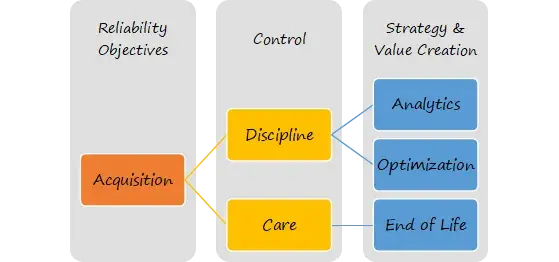Asset Reliability Transformation: The Maintenance Perspective

But what does asset reliability mean for operation and maintenance managers? How does the concept translate into viable strategies? In this article, we will discuss asset reliability transformation, how more reliable plants can be built and maintained, and what it would mean for the asset maintenance teams of tomorrow.
Reliability as a term often revolves around adherence to defined standards, a set of expectations, and consistent performance. For most industrial assets, reliability means performing within pre-defined operating conditions and delivering expected results. In a production environment, therefore, an increasing focus is shifting toward asset reliability management. Reliable assets:
- Experience lesser breakdown and component failures
- Are available whenever they are required in the production process
- Safer and more sustainable to operate
- Adhere to regulatory and quality standards
- Minimize net maintenance costs and effort
Although, throughout Industry 4.0, there has been a gradual buy-in from manufacturing leaders for prioritizing asset reliability, the ‘how’ part of it has been remiss. Operations and maintenance managers understand the need for reliable assets in their production plants, but how to make available assets more reliable is still not well understood.
With asset reliability transformation, the status quo is changing and manufacturing industries are beginning to develop scalable and sustainable strategies to improve asset reliability.

1.Acquisition:
At the very first stage of asset acquisition, it is critical to determine whether the asset is designed and built for reliable performance or not. Furthermore, once acquired, the asset should improve the net plant reliability, integrating with the existing infrastructure and asset ecosystem. These prerequisites can be featured in every project plan along with standard regulation and acceptance tests that are performed at the time of new asset acquisition.
2.Discipline:
Once an asset has been installed and started functioning, the operation teams start focusing on asset control. This includes defining the workflows, planning, and scheduling asset utilization, determination of precision work conditions, and adopting CMMS (Computerized Maintenance Management Systems). Factoring in the standard wear of components, spares management must also be an important driver to ensure continued asset reliability.
3.Care:
Meticulous asset care directly contributes towards improved asset reliability. From adoption of standard operating procedures to a strategic maintenance approach; asset care includes cleaning, lubrication management, equipment calibration, and maintenance management, spares inventory, and operator care. Moving away from reactive and preventive maintenance to adopt more advanced prescriptive and predictive maintenance models can lay a foundation for more available and reliable assets.
4.Analytics:
For effective analytics to happen and provide business intelligence, processes and tools need to be in place for capturing relevant information. Key metrics to monitor and measure performance needs to be identified and regularly tracked. With AI and IoT-enabled solutions, predictive analytics can be used to diagnose hidden failures, minimize the risk of asset breakdown, and drive reliability objectives.
5.Optimization:
Asset optimization requires constant monitoring of machine health while assessing risks, challenges, and opportunities for driving reliability objectives. OEE (Overall Equipment Effectiveness) forms the premise for ensuring asset reliability, which can strategically build toward total plant reliability.
6.End Of Life (EOL):
Ultimately, End of Life management for all plant assets is also essential for maintaining sustainable production practices and pursuing reliability in a responsible manner. Before spares are installed or assets are replaced completely, performing root cause analysis for failure and capturing breakdown circumstances is critical. Information captured at this stage should serve as insights for managing new assets. Disposal standards for assets must also conform to regulatory norms.
Advanced predictive maintenance and digital reliability solutions can empower plant operation teams to build a connected enterprise that has a mine of asset intelligence. With the right information accessible and analyzed for generating meaningful insights, maintenance teams can lead the reliability transformation wave.
- Visibility of all assets can be optimized with cloud and IoT-enabled technologies, and can capture asset data 24×7
- Asset performance, condition, and need for intervention can be monitored in real-time with minimal human intervention
- Plant-wide data can be predictively analyzed to plan and schedule maintenance events
- Asset cleaning, lubrication, and maintenance can be strategically planned for minimal disruption in production schedules
- Spares management can be streamlined and optimized by realizing the complete remaining life of assets and avoiding preventive part replacements
- Key metrics such as MTTR (Mean Time To Repair), and Mean Time Between Failure (MTBF) can guide maintenance planning, making equipment more reliable and available
- Root cause failure analysis and predictive analytics can provide helpful insights to guide asset acquisition and management










